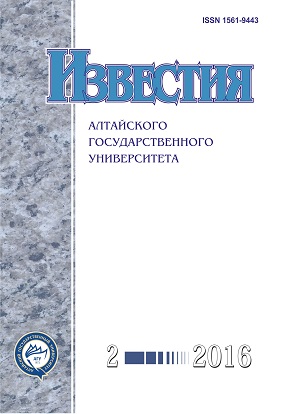The Problem of the Functional Classification of the Bronze Age Tools in Forest-Steppe Altai
Abstract
The article deals with the problem of the functional classification of tools from the monuments of the Bronze Age in forest-steppe Altai. The authors emphasize the need to establish functional classifications based on the results of the trasological analysis of tools’ collections. The paper analyzes the available in archeological science experience of functional classification and also focuses on the insufficient development of methodological issues associated with this procedure. In addition to theoretical problems, consideration is given to the practical difficulties arising with the creation of the Bronze Age work tools’ functional classification. The specificity is substantiated of classification of bone tools. According to the authors, certain difficulties are associated with the inclusion to the functional classification of reused multifunctional objects and tools used for the same labor operations but demonstrating different technical and morphological characteristics. As one of possible solution to these problems, the authors propose to introduce to the functional classification a fractional unit — “a functional variant”.
DOI 10.14258/izvasu(2016)2-33
Downloads
Metrics
References
Классификация в археологии. - СПб., 2013.
Мартынов А.И., Шер Я.А. Методы археологического исследования. - М., 2002.
Семенов С.А. Первобытная техника. - М. ; Л., 1957.
Коробкова ГФ. Хозяйственные комплексы ранних земледельческо-скотоводческих обществ юга СССР : авто-реф. дис.. д-ра. ист. наук. - М., 1981.
Коробкова ГФ. Хозяйственные комплексы ранних земледельческо-скотоводческих обществ юга СССР. - М., 1987.
Коробкова Г.Ф., Щелинский В.Е. Методика микромакроанализа древних орудий труда. Ч. 1. - СПб., 1996.
Поплевко Г.Н. Методика комплексного исследования каменных индустрий. - СПб., 2007.
Матюхин А.Е. О целях, роли и соотношении типологического и технологического подходов в первобытной археологии // Петербургская трасологическая школа и изучение древних культур Евразии: в честь юбилея Г.Ф. Коробковой. - СПб., 2003.
Щелинский В.Е. О соотношении формы и функции орудий труда нижнего и среднего палеолита // Археологические вести. - 2000. - № 8.
Лоллекова О. Функциональная классификация кремневой индустрии стоянки Сенек // Экспериментальнотрасологические исследования в археологии. - СПб., 1994.
Килейников В.В., Юдин А.И. Костяные орудия и изделия Варфоломеевской стоянки // Археологические вести. Вып. 1. - Саратов, 1993.
Коробкова Г.Ф. Функциональная типология орудий труда и других неметаллических изделий Алтын-Депе // Особенности производства поселения Алтын-Депе в эпоху палеометалла. - СПб., 2001.
Федорук А.С., Вальков И.А. Орудия кожевенного производства поселения Жарково-3 // Изв. Алт. гос. ун-та. - 2015. - № 4/2 (88). D0I:10.14258/izvasu (2015)4.2-39
Клейн Л.С. Археологическое исследование: Методика кабинетной работы археолога. - Кн. 1. - Донецк, 2012.
Izvestiya of Altai State University is a golden publisher, as we allow self-archiving, but most importantly we are fully transparent about your rights.
Authors may present and discuss their findings ahead of publication: at biological or scientific conferences, on preprint servers, in public databases, and in blogs, wikis, tweets, and other informal communication channels.
Izvestiya of Altai State University allows authors to deposit manuscripts (currently under review or those for intended submission to Izvestiya of Altai State University) in non-commercial, pre-print servers such as ArXiv.
Authors who publish with this journal agree to the following terms:
- Authors retain copyright and grant the journal right of first publication with the work simultaneously licensed under a Creative Commons Attribution License (CC BY 4.0) that allows others to share the work with an acknowledgement of the work's authorship and initial publication in this journal.
- Authors are able to enter into separate, additional contractual arrangements for the non-exclusive distribution of the journal's published version of the work (e.g., post it to an institutional repository or publish it in a book), with an acknowledgement of its initial publication in this journal.
- Authors are permitted and encouraged to post their work online (e.g., in institutional repositories or on their website) prior to and during the submission process, as it can lead to productive exchanges, as well as earlier and greater citation of published work (See The Effect of Open Access).








